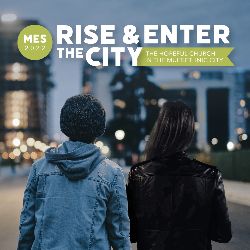Loading...
Start Date
3-5-2022 9:30 AM
End Date
3-5-2022 9:45 AM
Description
Neighborhood stability is drastically different in urban centers compared to suburban communities. The number of rental units in urban centers, combined with differing family formation and suburban flight patterns, result in neighborhood churn that change community demographics. Some neighborhoods turn over every decade, and migration patterns often bring in diverse cultural groups. The changes in race, language and socioeconomics can drastically alter the culture of a neighborhood in as little as a decade. In turn, these changes present challenges to the institutional church, requiring creative ideas for funding ministries, allocating staff, and measuring success outside of attendance and giving. In this presentation, Huenink will examine case studies of three historic churches in Chicago [First Bethlehem Lutheran Church (1871), Chatham Fields Lutheran Church (1924), and Jehovah El Buen Pastor (1908)] within the historical context of rapidly changing neighborhoods. While many people see urban churn primarily through race or language, this study will highlight how racial categories can obscure significant changes in education and income that have affected congregations more than race. By using archival sources and current interviews, this presentation will provide insights into present-day neighborhood churn as a challenge to congregations as well as ideas for best practices to address it.
Submission Type
Bible Study; Lecture; Sermon Prep
Submission Topics
World Mission
Submission Audience
Laity; Ministers; Scholars
Submission Cost
Free
Neighborhood Churn as a Challenge to the Institutional Church in Chicago
Neighborhood stability is drastically different in urban centers compared to suburban communities. The number of rental units in urban centers, combined with differing family formation and suburban flight patterns, result in neighborhood churn that change community demographics. Some neighborhoods turn over every decade, and migration patterns often bring in diverse cultural groups. The changes in race, language and socioeconomics can drastically alter the culture of a neighborhood in as little as a decade. In turn, these changes present challenges to the institutional church, requiring creative ideas for funding ministries, allocating staff, and measuring success outside of attendance and giving. In this presentation, Huenink will examine case studies of three historic churches in Chicago [First Bethlehem Lutheran Church (1871), Chatham Fields Lutheran Church (1924), and Jehovah El Buen Pastor (1908)] within the historical context of rapidly changing neighborhoods. While many people see urban churn primarily through race or language, this study will highlight how racial categories can obscure significant changes in education and income that have affected congregations more than race. By using archival sources and current interviews, this presentation will provide insights into present-day neighborhood churn as a challenge to congregations as well as ideas for best practices to address it.


